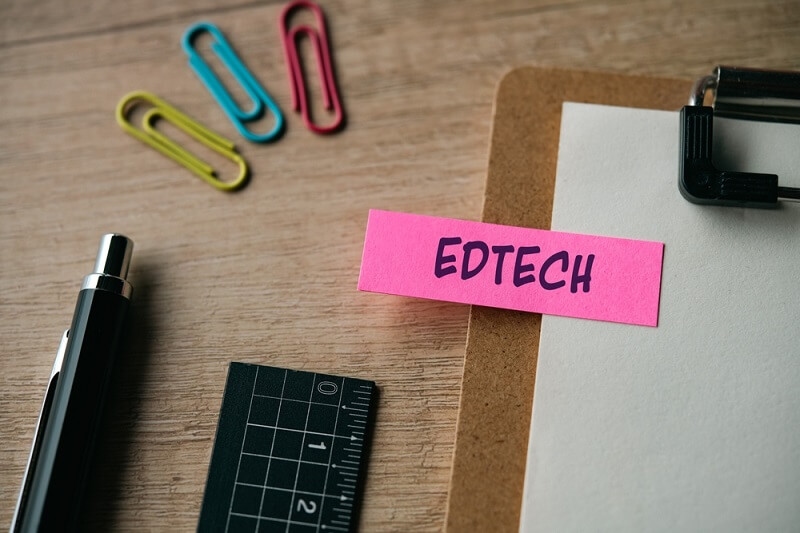
In today's digital-landscape, inclusive EdTech design is a critical building block for equity in learning. Millions of learners depend on digital tools, and inclusive online learning has moved from a "nice to have" to a necessity. The design of educational technology determines who learns, how they know, and whether all learners are given an equal opportunity to thrive.
Inclusive EdTech design enables us to ensure that no student is left behind, regardless of their physical disability, cognitive struggles, or cultural and linguistic differences. Education providers can create e-learning ecosystems that genuinely benefit diverse learners everywhere by leveraging inclusive digital tools for learning and by being mindful of online learning accessibility trends.
Simply put, it is about designing technology that truly honors the unique needs of each learner while still maintaining the quality and integrity of learning.
The benefits of inclusive EdTech design extend beyond just functionality and ease of use. It is a matter of social responsibility, laws, and, more importantly, empathy.
Education accessibility has included physical classrooms for many years—ramps, Braille texts, and personal aides. But on the internet, accessibility is different—captions, text-to-speech options, screen reader support, color contrasts, and customizable UI.
Accessible online education ensures that all students, regardless of their disability, background, or ability, can read, interact with the content, and learn educational material in the online space.
Accessible EdTech is not merely outdated; it is exclusionary. Inclusive online learning opportunities create the ability for organizations and EdTech providers to be catalysts for change in addressing this inequality.
Building successful Inclusive EdTech design and development combines empathy, research, and technology into an intentional balance. The principles of inclusive EdTech design to support the movement away from non-inclusive education technology are stated below:
UDL emphasizes creating educational experiences that are effective for all learners from the beginning. Instead of adding accessibility features after the fact, UDL prioritizes accessibility in the design process.
An accessible platform enables users to customize their experience. Adjustable font sizes, screen readers, and voice recognition enable students with different needs to navigate content efficiently.
International guidelines, such as the WCAG (Web Content Accessibility Guidelines), support platforms in developing online learning and inclusive e-learning designs that comply with basic accessibility standards.
Inclusivity is more than recognizing that students come from different cultural and linguistic backgrounds. EdTech platforms that offer multilingual support, visual cues, and localized content provide a richer experience for diverse learners.
Evaluating user experience from students with disabilities and backgrounds provides in-depth information about the use and design of inclusive digital learning tools.

The global shift to virtual classrooms has underscored the pressing need for accessible online learning options for all students, including those in elementary and corporate settings. Learning today is more digital than ever before.
Accessibility means providing learning opportunities in which students of all abilities can engage meaningfully. For example, students with visual disabilities must be able to navigate interfaces with their screen readers without interruption. Students with hearing disabilities must have access to videos that include captions or transcripts.
Platforms that exemplify inclusive EdTech design exceed accessibility legislation. They foster a sense of belonging, which leads to greater engagement, retention, and overall academic success for students.
The intersection of inclusive e-learning design and inclusive digital learning tools enables a seamless bridge between technology, allowing all learners to support one another and stretch their abilities to their fullest potential.
The development of inclusive digital learning resources has revolutionized the way instructors and institutions present online material. Some of the life-changing innovations that are leading to online learning accessibility trends around the world include:
Artificial intelligence adapts lessons to a student's pace, interests, and learning ability. AI determines where a student is challenged and adjusts the content accordingly, embracing genuine inclusion.
Voice-accessible platforms enable learners with mobility or visual impairments to engage with lessons without the need for manual interaction.
Tools that integrate visuals, audio, and interactive touchpoints are inclusive for students who are differently abled—especially neurodiverse students.
These tools make online learning more accessible for non-native speakers and students with hearing impairments.
Gamification motivates learners through play and engagement while integrating accessibility features directly into the experience.
All of these tools demonstrate the potential of inclusive EdTech design to combine innovation and compassion, enabling teachers to teach all students with the same level of effectiveness.
The beauty of EdTech for varied learners is its ability to change the landscape of what "traditional" education can be. Education no longer needs to conform to a single structure for a single type of learner.
EdTech design, when integrating adaptive technologies and data analytics with the concepts and principles of inclusion, allows inclusive EdTech design, meaning all learners, regardless of their background—learners with disabilities, multilingual learners, neurodivergent learners, or learners from underserved communities—will have access to opportunity.
Inclusive e-learning design in the future society cannot happen without collaborative partnerships among developers, educators, policymakers, and accessibility advocates. Together, they will create a culture where difference in learning is not a barrier, but an innovative door.
As learning advances into the future, several accessibility trends in online learning are shifting the way digital learning platforms are being designed:
Advanced AI assistants are currently helpful for learners, offering real-time assistance with reading, reminders of tasks, and feedback that is contextualized to experiences.
AR/VR technologies are being designed and defined to create an inclusive, accessible online learning experience, creating immersive experiences for learners with different sensory processes.
Inclusive Gamification is about recreating the game to be accessible to all abilities and levels of promotion.
Many users now rely on their mobiles to access instructional content. Inclusive digital learning technologies are adapting to mobile devices, making learning accessible to users across various platforms on smaller screens.
Measuring accessibility and identifying which user groups face barriers is facilitated by analytics.
These approaches to improving accessibility in online learning will impact how inclusive EdTech design responds to future demands: instead of expecting accessibility to be an afterthought, it will become a necessary part of any design.
In designing for inclusiveness in learning, we embrace a far more comprehensive view and philosophies of meeting human diversity, empathizing complexity, and improving human experience beyond just ensuring compliance and technical layers of accessibility.
The emphasis on usability, clarity of content, and accessibility features supports learners in accessing their education aligned with their strengths.
This design ethos will provide advantages not just for students with disabilities, but for all learners.
For example, captions assist non-native speakers and those learning in noisy settings. High-contrast images facilitate understanding for all, not only for those with visual impairments.
By investing in inclusive e-learning design, institutions promote trust, improve engagement, and future-proof their learning systems. In this context, inclusivity is the ultimate innovation.
To establish a sustainable and fair educational system, inclusivity must traverse each level of the experience: from ideation to implementation. Major stakeholders (policymakers, educators, and developers) must fulfill their distinct roles:
Through collaboration and partnerships among the three identified groups, the inclusive design of educational technologies can continue to progress and set the stage for all students to benefit from the digital shift.
Despite progress, obstacles exist in making education inclusive:
Most developers and institutions are still unaware of accessible online learning and inclusive standards.
Cost and time are often factors associated with embedding accessibility features, which may be deterrents for some smaller institutions.
Accessibility requirements can vary depending on institution, country or platform, resulting in varied experiences for learners.
Students from low-income and rural communities may lack the necessary devices or reliable internet access, leading to the digital divide.
Should these challenges be addressed through collaboration and creative problem-solving, there is hope for the future of inclusive digital learning tools.
Inclusive EdTech design will advance in the coming decade, supported by advances in technology such as AI, XR (Extended Reality), and adaptive analytics. These technologies will create highly personalized and equitable online learning environments that are responsive, compassionate, and of the highest quality.
As inclusivity becomes a global norm, rather than a regional initiative, inclusive e-learning design will become even more desirable. Developers will embed accessibility at the code level, and educators will adopt inclusive models of teaching bolstered by data.
Eventually, inclusive EdTech design will shape the next iteration of education—one where equality, technology, and innovation coexist seamlessly.
The shift towards inclusive EdTech design is not merely a technological movement—it's a moral and pedagogical imperative. As universally accessible online education goes mainstream and inclusive digital learning tools scale worldwide, education is poised to enter its next phase—one founded on empathy, innovation, and shared opportunity.
Investing in inclusivity today creates a future where each learner, regardless of their ability, language, or background, has the opportunity to flourish. Inclusive EdTech design is the path to that future, helping ensure that education is accessible to everyone.
This content was created by AI